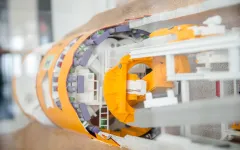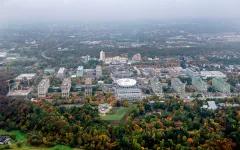
SFB 1491
Cosmic Interacting Matters
The Collaborative Research Centre combines the subfields of astrophysics, plasma physics, astroparticle physics and particle physics.
In the night sky, we observe the same constellations year after year with the naked eye, so that we might get the impression that the Universe is a static construct: a thought that prevailed for centuries, before it was possible to prove at the beginning of the 20th century that the Universe is a dynamic system that emerged with a Big Bang, and still continues to expand.
Even on smaller scales, the dynamics are high, stars form and perish in powerful supernova explosions. In doing so, they influence the dynamics of their host galaxies. The explosions create a plasma which is able to accelerate particles to the highest energies, which in turn interact with cosmic magnetic fields. This interplay of cosmic matter that drives these processes is the research focus at Collaborative Research Centre (SFB) 1491. Some of the research questions are: How are different forms of matter and energy transformed into each other? How are the smallest elementary particles accelerated to the highest energies ever observed? How do large-scale magnetic field structures form in the plasma of galaxies? How does dark matter affect the dynamics of the systems?
Sixteen leading researchers are working together in 13 subprojects to create a unifying picture of the detectable traces of interacting matter. They aim to understand how regular galaxies like our Milky Way work, as well as the ones with an active, supermassive black hole at their core. To this end, theoretical astrophysical models are combined with experimental observations of all wavelengths and particles. Furthermore, SFB 1491 provides knowledge about the fundamental properties of matter from theoretical calculations, cosmological observations and terrestrial experiments on particle interactions. This knowledge can be used directly in astrophysical models. The combination of the two research strands provides a detailed and precise picture of how galaxies function and evolve.
Professor Julia Tjus from the Faculty of Physics and Astronomy is spokesperson at the SFB.


